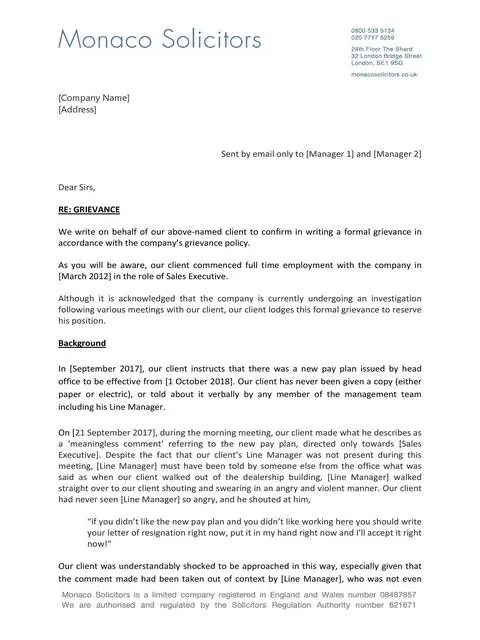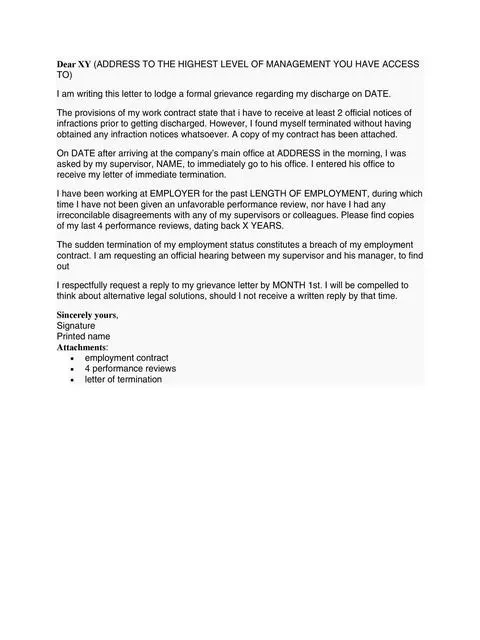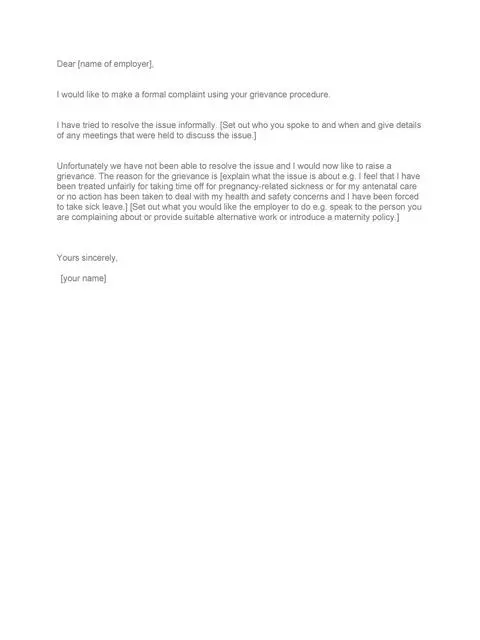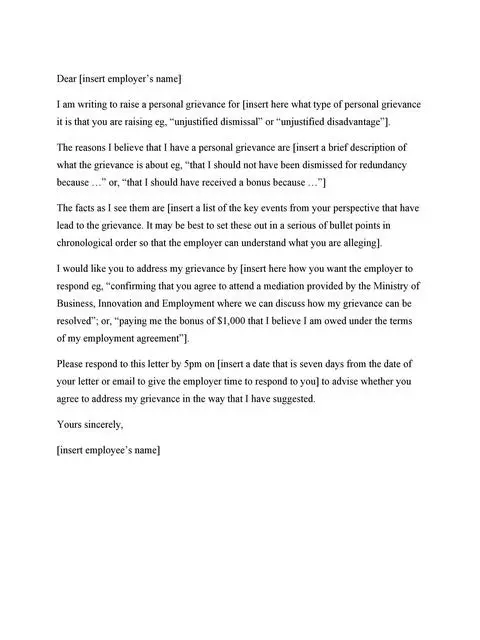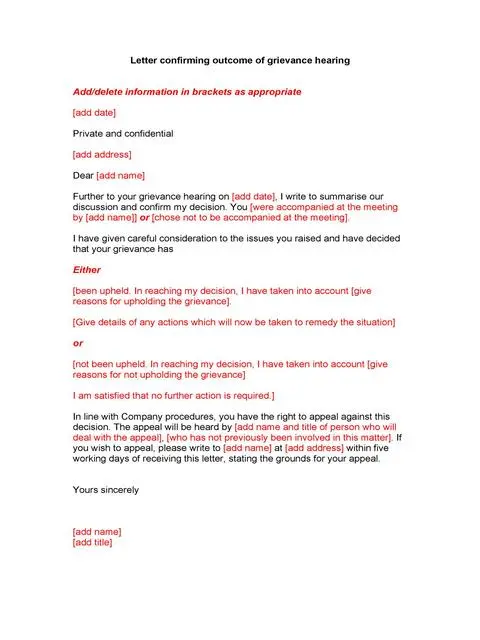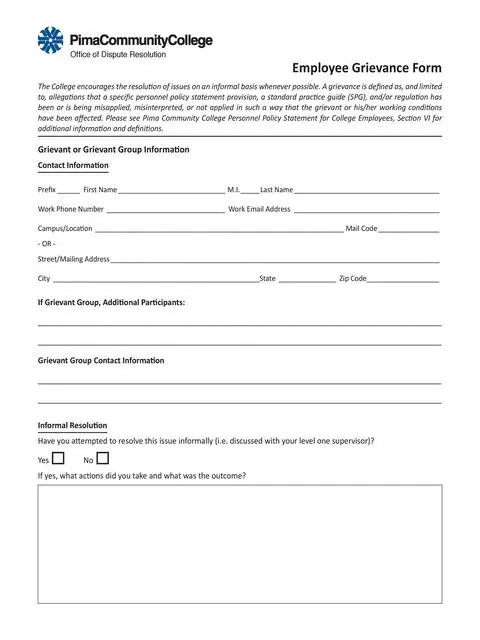Grievance letter are commonly written to complain about work issues or unfair treatment meted out to an employee. A grievance letter should be properly signed and maintained in a safe place so as to prove that it has been read and acknowledged.
It is often a formal letter addressed to the concerned employer and demands for immediate action. The main aim of such a letter is to seek redress for the said unfair treatment meted out to the employee.
Grievance Letter
Grievance Letter Sample
How to Write Great Grievance Letter
There are many factors which determine whether an employee will accept or reject a proposed grievance letter. Before sending out the letter, it is important to chalk out clear instructions on how to deal with such complaints raised by employees. If a letter is not followed correctly from the outset, then the employee may not fully understand the repercussions of his actions.
Therefore, it is advisable to send out a few different letter sample in correspondence with the employer so that each one gives detailed information about the same matter. This will give the employee a clear idea of what is expected of him and what steps to take next.
Always avoid using very general words when complaining. Use specific words and explain the problem in detail. Never use words like “always” and “never” when talking about working hours ago and other such problematic issues. Never use words like “never” and “never mind” because the employer will see this as a sign of weakness and will not be in a mood to bargain with employees.
Punctuate your grievance letters with reasons why the company should pay heed to your demands. State the reason clearly and why you feel so. Do not exaggerate or state things which are exaggerated or untrue. Never lie or misrepresent data.
Never use any inappropriate language either because you are embarrassed, or you are trying to bait the employer into accepting your viewpoint. Your grievance procedure letter should be well written and should address the employer to offer your complaint settled once and for all.
Grievance Letters Template
You can use standard grievance letters templates as guidelines. However, do not copy the entire template word for word as it could be considered plagiarism. If you feel that you cannot draft your own letter properly, you can seek assistance from a qualified professional.
There are many lawyers and experts around who are willing to help draft the best formal grievance letter that will put the employer on the defensive quickly and save you hours of frustration.
Make the letter to the employer as personal as possible. Do not use jargon or acronyms. Avoid using very flowery language unless you are experienced in dealing with similar situations. Include details of the events leading up to the recent incident.
State the name of the harasser accurately but try not to reveal too much personal information because that may put the employee on trial. Most formal grievance letters contain a clause stating that the employer has the right to view the employee’s personnel file.
Grievance Letters Example
Do not make general statements about the problem. Be specific in detailing the problem, providing dates, and attaching supporting documents if available. For example, if you were working in a department where you did not like the appearance of the decor, you can mention this in your grievance letters. The sentence should close with “I have suffered unfair treatment in the past few months”. This sentence clearly states the problem and gives the employer the required notice period.
Never tell the employer that you are going to wait for two hours ago when you will file a formal complaint. This could be taken as an admission of guilt by the employer and could result in you losing your job. It is better to let the employer know that you are aware of his or her policy regarding complaints filed within two hours. If you are in doubt, it would be best to check out free samples of grievance letters from previous employment as this could save you from future problems.















